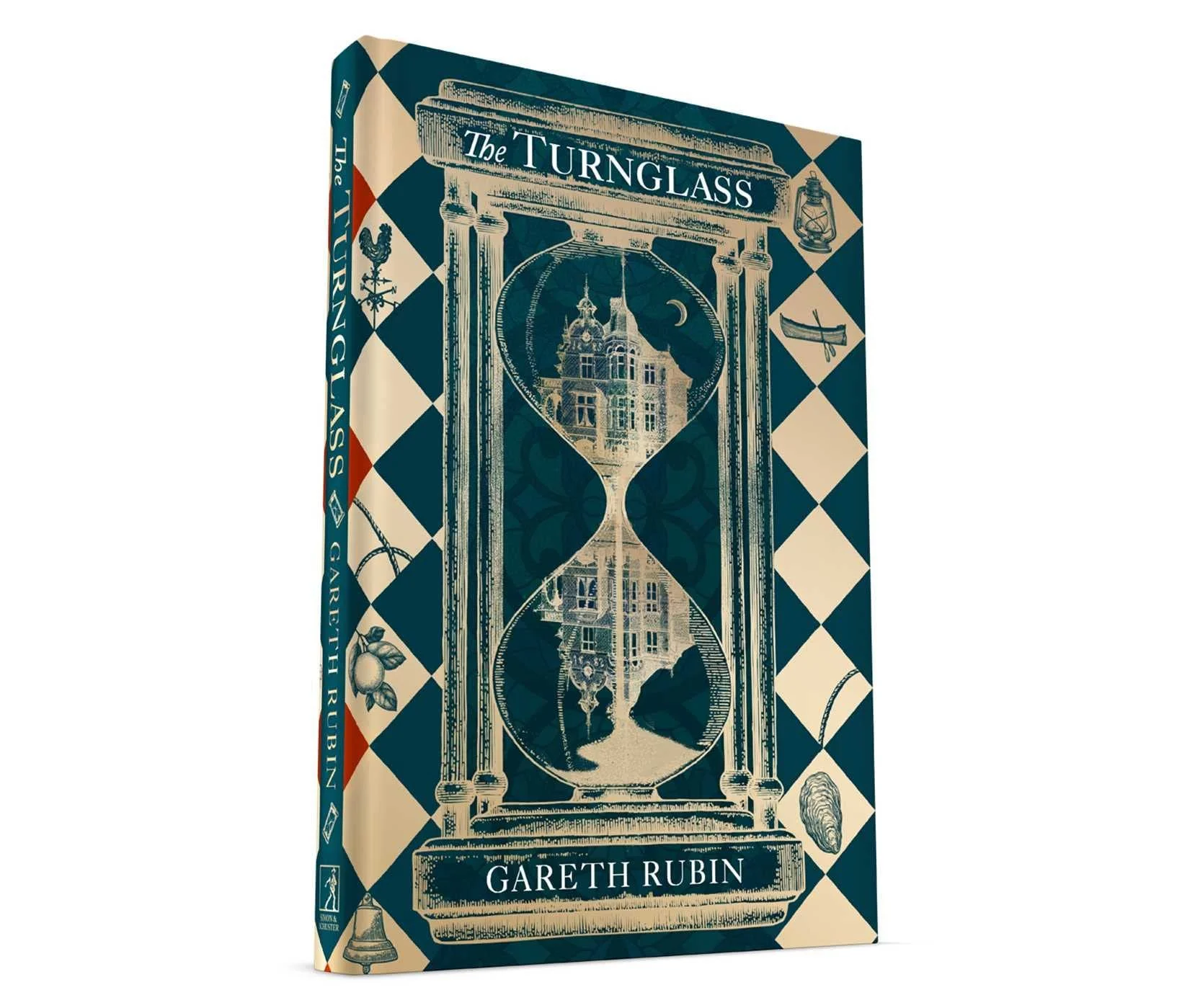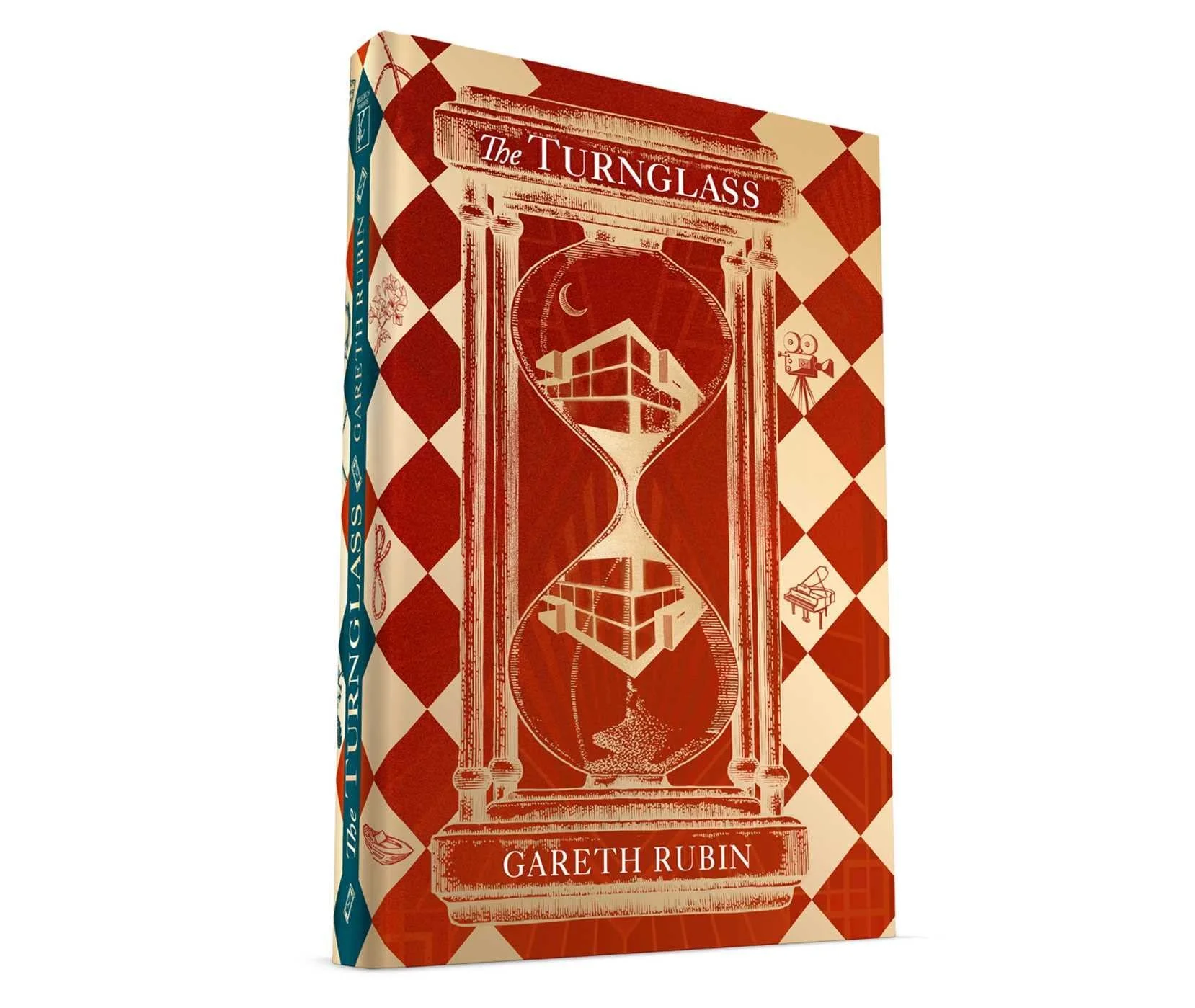The Turnglass by Gareth Rubin
I would like to thank Simon and Schuster UK and Ann from Random Things Tours for an advance copy of this novel in exchange for a fair and honest review
Publisher - Simon and Schuster
Published - 31/8
Price - £16.99 hardback £8.99 Kindle eBook
1880s England. On the bleak island of Ray, off the Essex coast, an idealistic young doctor, Simeon Lee, is called from London to treat his cousin, Parson Oliver Hawes, who is dying. Parson Hawes, who lives in the only house on the island – Turnglass House – believes he is being poisoned. And he points the finger at his sister-in-law, Florence. Florence was declared insane after killing Oliver’s brother in a jealous rage and is now kept in a glass-walled apartment in Oliver’s library. And the secret to how she came to be there is found in Oliver’s tête-bêche journal, where one side tells a very different story from the other.
1930s California. Celebrated author Oliver Tooke, the son of the state governor, is found dead in his writing hut off the coast of the family residence, Turnglass House. His friend Ken Kourian doesn’t believe that Oliver would take his own life. His investigations lead him to the mysterious kidnapping of Oliver’s brother when they were children, and the subsequent secret incarceration of his mother, Florence, in an asylum. But to discover the truth, Ken must decipher clues hidden in Oliver’s final book, a tête-bêche novel – which is about a young doctor called Simeon Lee . . .
Stories are often in conversation with other tales. Some re-imagine, some argue with the themes and some do very different things with the same riffs. It’s part of the joy of reading watching these connections. In Gareth Rubin’s fascinating historical mystery (or perhaps mysteries) The Turnglass we get a unique puzzle where the book itself holds the clues to the resolution of a decades long mystery.
In 1881 young Dr Simeon Lee is shocked to find his cholera funding is being stopped. His only hope for funds now is taking a well position in Essex to tend to a wealthy relative, his middle aged cousin Parson Oliver Hawes. He finds a remote coastal village unwelcoming of strangers and makes his way to the island home of The Turnglass which gets cut off in high tide. There he finds mutliple family mysteries to solve and his relative claiming he is poisoned. A clue is a mysterious book with tales of the future.
In 1939 Ken Kourian like many young Americans is attempting to have a Hollywood career but is finding Los Angeles life hard. A welcome surprise is making a friend in the form of wealthy author Oliver Tooke. He lives in a splendid glass house on the shore known as The Turnglass. Ken explores the life of the rich but is shocked to find Oliver dead. He cannot believe this was a suicide and investigated the crime and a clue is Oliver’s last book. Known as a tete-beche that tells the mystery of a young man known as Dr Simeon Lee.
So the key to this innovative and engrossing tale is that the book itself is a tete-beche. Two stories bonded in one book (but you need to turn it over for the second one) they meet in the middle and traditionally the two tales are in conversation and in some ways an inversion of each other.
Rubin starts (well for me at least) with the Victorian Gothic and it’s a finely told melodrama with the classic elements of remote gloomy homes, fierce villagers and an absolutely jaw dropping reveal at the house. I won’t spoil it but it suits this type of tale. We get tales within court cases, letters and diaries creating a tragic web of secrets poor Simeon had to uncover if he is to save his cousin. Very intricate, very atmospheric and then we get a drop of a futuristic mention via a book set in 1930s California. It jolted me and now put me on alert something strange is afoot!
Then in Rubin’s 1930s noir tale is a very stylistically different tale of classic noir elements. Wealthy people playing games with other people’s lives, action sequences and dark family secrets even in LA sunshine all combine around the Gatsby-like tragic character of Oliver. Ken our knight in shining armour tries to do the right thing and then it’s Olver Victorian tale that holds the key.
What really impressed me is the two tales though technically different sub genres have little motifs like names, colours and even certain scenes that make us realise these are in conversation with each other. But exactly why? This is a tale of stories within stories within stories. Which one though is true? Are any? Reading one was fun but reading both is a much more involving reader experience and one that makes us reappraise what we know so far.
This book is a very engaging and technically difficult story that Rubin pulls both off and then can combine them to very impressive effect. Fans of historical mysteries and intricate thrillers should find much here to enjoy and it’s definitely well worth a look!


